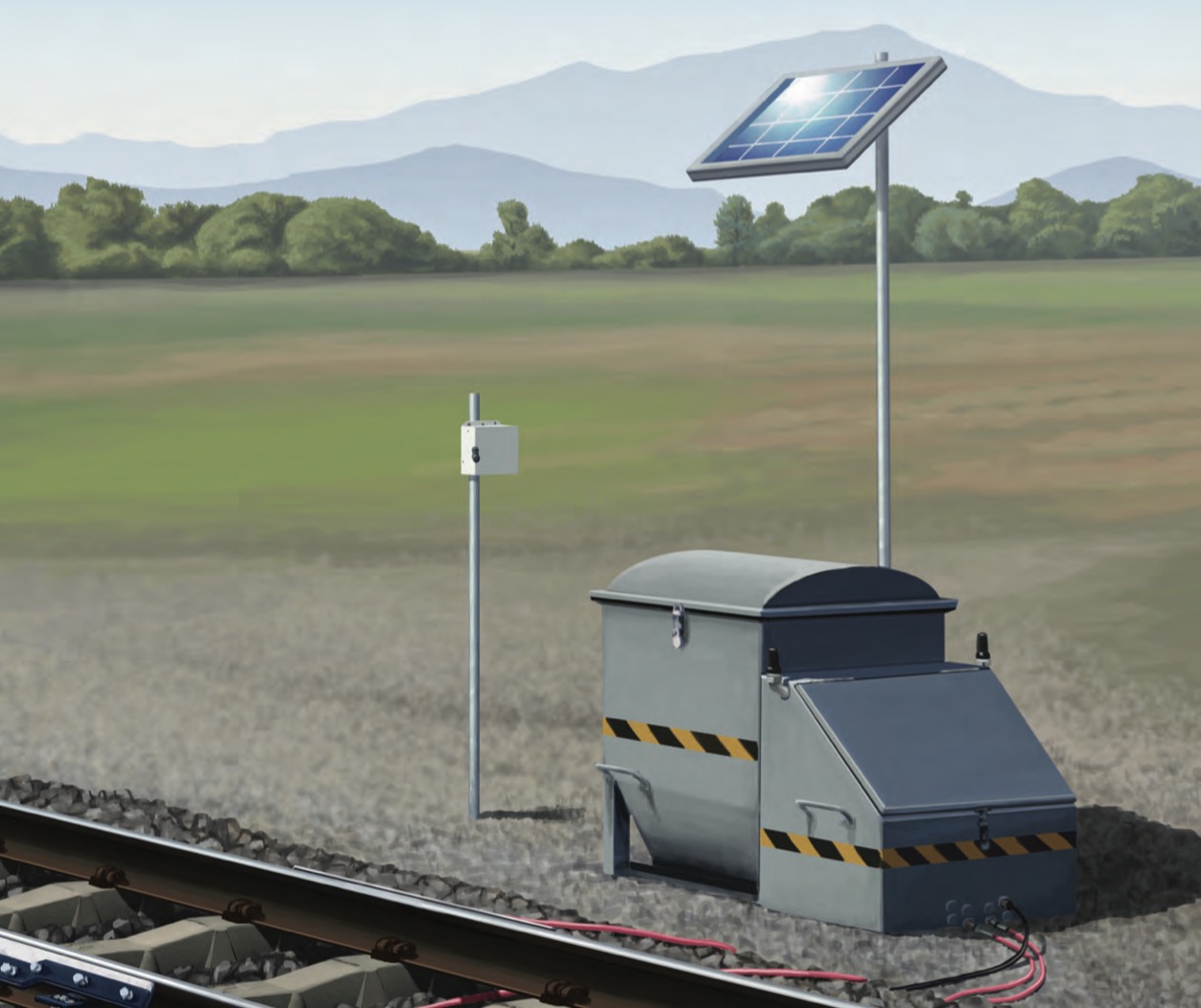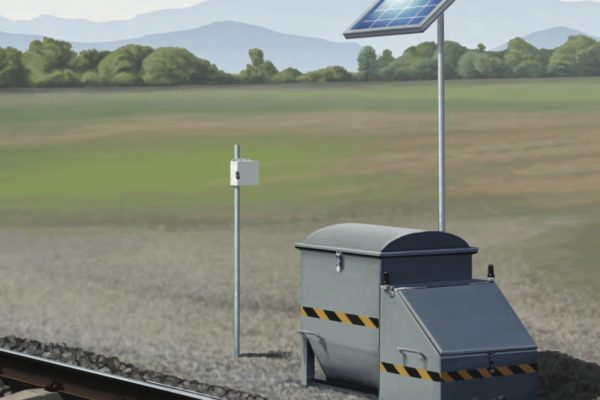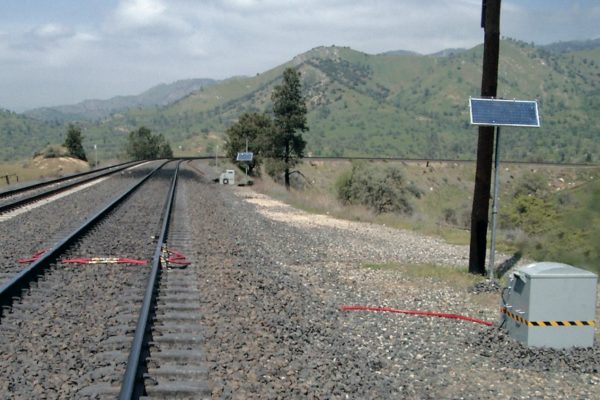Top of Rail
Keltrack® Friction Modifier
Top of Rail (TOR) friction impacts lateral forces, rail /wheel wear (top of rail and tread), rolling contact fatigue, fuel efficiency, squeal noise, flange noise, corrugations, hunting, derailment potential and traction/adhesion. LB Foster’s Protector IV® Track Lubrication system applies revolutionary KELTRACK® Trackside top of rail friction modifiers exactly where required through a range of TOR foam applicator bars including the new, simplified foam bar.
Top of Rail Friction impacts:
- Lateral forces
- Rail/wheel wear
- Fuel efficiency
- Rolling contact fatigue development
- Squeal noise
- Flange noise (indirect) and
- Derailment potential.
Wayside Protector IV®
Track Lubrication System
The Protector IV® is a field proven electrical trackside lubricator that provides the most precise application of rail curve grease with minimal maintenance. The system includes:
- A choice of tank capacities (90kg or 360kg)
- Easy to operate solid state digital controls
- Remote Performance Monitoring
- L.B. Foster’s patent-pending foam technology
- Non contact, ‘smart’ magnetic wheel detector
- Is available in AC power (110v or 220v) or DC Solar (12volt)
- The 360kg tank is available as a dual unit and can service 2 tracks from the same location
KELTRACK® Friction Modifier
Applied to Top of Rail foam applicator bar
To reduce top of rail friction, the LB Foster Wayside Protector IV® applies KELTRACK® friction modifier to the TOR foam applicator bar, a revolutionary product that has achieved noise reductions averaging 10dB and up to 22dB as well as lateral force reductions up to 50%.
KELTRACK® is a water- based suspension of proprietary solids, when applied to the railhead the water component evaporates and the material remains as a thin dry film (no oil or grease components, environmentally benign).
This film creates an intermediate coefficient of friction on the railhead of approximately 0.35 that will not a effect traction or braking while providing an optimum friction level on top of the rail for minimising wear, energy, noise and lateral forces in a safe and reliable manner.



Wayside Protector IV®
Track Lubrication System
L.B. Foster’s PROTECTOR series trackside systems are the industry standard. The PROTECTOR is designed to apply either gauge face grease or revolutionary friction modifiers to the top of rail. This innovative system is easy to install and consistently delivers precise, controllable, and reliable application.
Protector IV® Benefits
- Field proven through continuous development over 10 years by the world leader in Total Friction Management
- An efficient compact design that allows easier placement in the field but still retains the benefits of good reservoir size and a clean hands compartment for access to the control systems.
- Designed for a simple, fast installation and an easily accessible maintenance regime the Protector is an ideal field installation solution.
- Electronic controls – the grease output is accurately controlled giving optimum and consistent delivery across a wide temperature range thus running costs minimized as grease usage is optimised
- Only four Grease Distribution Units (GDU’s) are required resulting in reduced maintenance burden plus quicker installation and commissioning times.
- All of the major components used within the lubricator are custom designed for the railway environment
- More than 50000 supplied worldwide and proven to flexible in a wide variety of applications and conditions.
- The grease and controls compartments are separate and with secure locking
- Ease of filling through a top position open access with a comfortable filling height.
- Small footprint and narrow orientation ensures driver’s line of site is not obscured.
| TECHNICAL SPECIFICATIONS | |
| Application | Gauge Face / Top-of-Rail |
| Power | DC Solar / AC Power |
| Tank Capacity | 90 – 362 kgs. (Grease) / 94 – 378 L. (Friction Modifier) |
| Mounting Options | Wall Mount / Embedded / Between Tracks / Surface Mount |
| Systems | Transit / Freight |
| Control Box Features | Self-Test, Fuse and Surge Protection, Watertight Enclosure |
| Smart Wheel Sensor | Standard Bi-Directional / One-Way |
| Consumption Rate | 0.34kg /1000 Axles (Grease) / 0.5 L/1000 Axles (Friction Modifier) |

We are the exclusive agents for LB Foster’s Total Friction Management solutions, which includes a wide range of proprietary systems to control friction between the wheel and rail for transit and freight rail applications.
For more than a century L.B. Foster has provided the materials necessary to build and maintain the world’s infrastructure and their friction management products and delivery systems provide substantial cost benefits by maximising equipment performance and minimising wear at the wheel/rail interface.
Friction Management Benefits on Transit Systems
Uncontrolled friction at the wheel/rail interface on a transit system results in and contributes to a number of detriments including: curve noise, excessive wheel and rail wear, corrugations and rolling contact fatigue, wheel flats, SPADS (signal passed at danger due to lubricant on the rail head), higher fuel/energy consumption and potential safety issues like wheel climb derailment and high lateral focus.
A Friction Management system will actively extend the life of your rail asset whilst ensuring increased safety and efficiency and reduced noise.
Friction Management | LB Foster
Noise Reduction
Curve noise reduction of up to 20 dB
Extend Wheel Life
Extend wheel life by up to 20x
Grinding Intervals
Extend grinding intervals by 2x
Rail Wear Reduction
35% – 60% rail wear reduction
Lower Fuel Consumption
3% – 7% reduction in fuel consumption
Lateral Force Reduction
25% – 40% lateral force reduction reduces derailment potential



